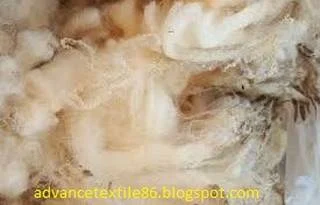Scouring
Scouring is a process by which natural oil, wax, and impurities are removed from fiber, yarn, or fabric. It is done by a chemical like detergent, alkali, etc. Very often use for scouring, caustic soda, soda ash, and detergent are used.
Wool Scouring
Wool
which we get from a sheep known as sticky wool or wool in Greece. It contains
high levels of valuable lanolin as well as sheepskin and sweat residue and
usually contains pesticides and vegetable substances from the animal
environment. Before the wool could be used for commercial purposes. The process
must be scrubbed to clean the sticky materials from the wool. Using detergents
and alkalis in simple or specialized equipment such as bathing in fountain hot
water can be as complex as the industrial process.
In
wool scouring, water alone cannot remove lubricants and dirt because water
molecules cannot enter the adhesive layer to separate them from the fiber
surface. The greasy film needs to be transferred from the fiber to the machine
to remove the impurities in the fiber like a greased film with dirt. To do this
the alcohol must first soak the fibers. The presence of a surfactant in the
detergent enables the water to coat non-wettable surfaces.
Moisture
reduces the interstitial tension between the grease and the water so that the
grease stays away from the droplets and floats away. Dirt removal is harder
than wool grease and adequate mechanical action by Harrow is essential for better dirt removal. Squeeze rollers also play a key role in removing dirt. It
is important to remove as much dirt as possible during scouring to avoid
problems with subsequent processing.
For example, dirty touches of yarn can cause light stiffness and inferior color. Most of the dirt and impurities are removed in the first bowl, the rest is removed in the next container. After the last (washed) ball, almost all impurities were removed except about 0.1 - 0.4% of wool grease in New Zealand or 0.0 - 0.6% in Australia. In special cases, potash pits were made to produce potash used to make soft soaps for locally produced white wool.
Wool Carbonizing
Carbonization
is a process by which vegetable matter is removed from raw wool. In other
words, carbonization is the conversion of organic matter, such as plants and
dead animals, into carbon through destructive distillation. The process will be
continued in a container with strong acids such as HCL or H2SO4.
Here it stays for some time like twelve hours and it shakes a few times. If the
acid is too strong, the vegetable substance is easily removed from the wool. At
the end of twelve hours, the wool acid is taken out of the pot and left to soak
for drying. Temperatures around 160o or 170o Fahrenheit are not as hot as they
used to be to damage woolen fibers, but the acid is hot enough to eat or burn
vegetable matter. Once dried, the vegetable substances will be seen to reduce a
gloss and come out easily in the form of dust with the shaking of the wool. Even
large buds, straws, seeds, etc. can be removed in this way. However, the risk of
using acid and heat is such that the process is usually only used for the
disposal of fine particles that aging and other machines cannot get. The
chemical carbonizing process was used in the wool manufacturing industry around
1880.










0 Comments